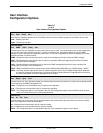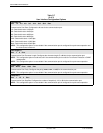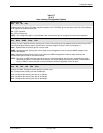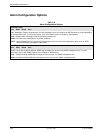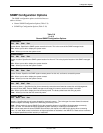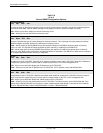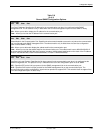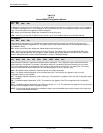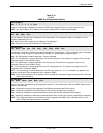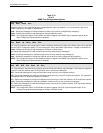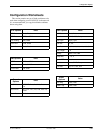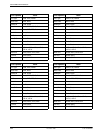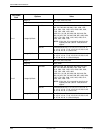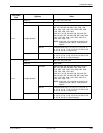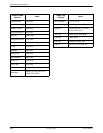
Configuration Options
C-213170-A2-GB20-20 December 1996
Table C-10
(1 of 2)
SNMP Trap Configuration Options
Num Trap Mgrs: 1
Next 1 2 3 4 5 6 Prev
Number of Trap Managers. Specifies the number of SNMP trap managers that are to receive traps for this unit.
NOTE: You must configure an IP address for each trap manager that is to receive trap messages.
Trap
n
IP Adr: Clear
Next Edit Clear Prev
Trap
n
IP Address. Specifies the IP address for each trap manager. This configuration option is repeated for all trap
managers supported by the unit.
Edit – Allows you to edit or display the IP address for Trap Manager
n
.
Clear – Allows you to clear the IP address for Trap Manager
n
.
Trap
n
Dst: None
Next None Com Aux FDL EDL1 EDL2 EDL3 EDL4 Prev
Trap Manager
n
Destination. Specifies the network destination for Trap Manager
n
. This configuration option is displayed
for the number of trap managers (
n
) specified by the Number of Trap Managers configuration option.
None – No Trap Manage
n
network destination. Traps are discarded.
Com – The Trap Manager
n
network destination is the communication port. This selection only appears if the Com Use
configuration option is set to SNMP or Daisy.
Aux – The Trap Manager
n
network destination is the auxiliary port. This selection only appears if the Aux Use
configuration option is set to SNMP or Daisy.
FDL – The Trap Manager
n
network destination is the FDL management link. This selection only appears if the FDL
management link is enabled for SNMP.
EDL
n
– The Trap Manager
n
network destination is the EDL
n
port (where
n
is 1–4). This selection only appears if the
synchronous data port’s EDL management link is enabled for SNMP.
NOTE: If the chosen destination link is disabled or down, the traps are discarded. Change the trap destination if the link
ceases to be operational.
Gen Trap: Both
Next Disab Warm Auth Both Prev
General Trap Types. Specifies the general trap types to enable. For more information, refer to the
SNMP Traps
section in
Chapter 4,
Maintenance
.
Disab – Disables the sending of trap messages for warmStart and authenticationFailure events.
Warm – Sends trap messages for warmStart events to the currently configured trap manager(s).
Auth – Sends trap messages for authenticationFailure events to the currently configured trap manager(s).
Both – Sends trap messages for warmStart and authenticationFailure events to the currently configured trap manager(s).
NOTE: This configuration option is not available and does not appear if the SNMP Trap configuration option (in the
Alarm Configuration Options
section) is disabled.



